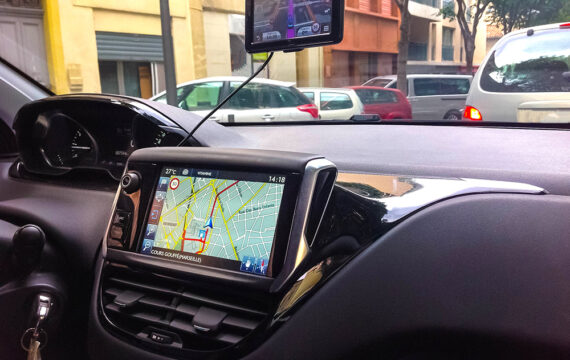It’s no secret that the automotive future is driverless, and self-driving cars may hit the roads sooner than you think. But have you ever wondered what the driver will do in the future of driverless vehicles? When you don’t have to pay attention to the road all the time or hold the steering wheel, how do you spend your free time in the car? That’s what we set out to explore.
Intellias has been keen on automotive R&D for years now. So, we looked into what free time in driverless cars of the future means and how OEMs and Tier 1 vendors can help drivers spend that time with maximum value.
Driverless cars of the future will save a significant amount of time
Traveling is very time-consuming. According to Audi, the average driver spends approximately 50 minutes in a car during a day. This number may look small on its own, but over the course of a year the total time spent in cars shows great inefficiency.
The average commuter spends 26 minutes a day getting to work, which results in nine days a year wasted on commuting.

Now think of what you could do if you had all these days back. Reclaiming the time spent in an autonomous car is a real solution. The future of driverless cars will liberate their passengers from driving tasks, leading to more free time for the passengers.
It’s obvious that some of the time people spend in cars they don’t enjoy. To be able to let the car do the work and use that time for something else will be a revelation, I think.
Thanks to autonomous cars, people will get additional free time while traveling or commuting. But how will they spend it? What will be left for a driver to do in an autonomous car? And anyway, will he or she be called a driver? All these questions need to be answered. It’s time to focus on the in-car experience of a passenger-driver, not just the driverless vehicle itself. Read on to find out about ways to spend time in a self-driving car.
Driverless cars, the future of driving: looking for solutions to keep you busy
How people spend their time in self-driving cars will depend on what these vehicles have to offer. There will be no need to bring any additional equipment for entertainment – all of it will be built into the car.
In a digital future, there are no limits to what can be imagined. We could offer everything in the car – really overwhelm the user with information. But we want to put people at the center of attention.
Self-driving cars haven’t reached level three on the autonomy scale yet, which means that for now the driver has to remain in the driver’s seat. Of course, you can take your hands off the wheel and do something else, but you still have to watch the road occasionally. Taking this into account, the best option for a driver to spend time in the current generation of self-driving cars is to use multimodal in-car interfaces. Connected to software products and services, these interfaces enrich human-vehicle interaction and give lots of options for spending free time in an autonomous car.
For instance, head unit applications can keep you busy during the ride. When connected to internet-based services, the head unit becomes an infotainment system that offers navigation, audio, video, and in-car internet access. As for the passengers in the back, rear seat entertainment systems can do the trick.
Heads-up displays were designed to augment the driving experience, but they’re also useful for providing information about the ride in an autonomous car. The UI for instrument clusters serves the same purpose. And since the driver still has to watch the road from time to time, these two solutions make it easier and more fun to do so.
Human Machine Interfaces (HMIs) make the vehicle more personalized; they increase its safety, comfort, and overall value. Powered by HMI, IoT, and connectivity, self-driving cars become more personal devices than just cars.
The future of driverless cars and the design of their interiors
It’s clear that in a fully autonomous car there will be no need for a passenger to remain in the driver’s seat. This actually means that there’s no need for front seats at all. The interior of self-driving cars will vary. And there’s a chance that it will remind us more of sci-fi than a conventional car.
The advent of autonomous cars is a very interesting time for us designers. The way we use the car and interact with it changes profoundly, and with it, novel design solutions and interior architecture will evolve.
Many car manufacturers have already come up with concept cars that have new interior designs. Rolls-Royce showed off a luxury car with a big sofa as the passenger seat and a wide screen in front of it. Volkswagen Group’s Sedric and Renault’s Symbioz both have four seats that face each other.
These car concepts are actually solutions to the problem of how to spend free time in an autonomous car. With these new interiors, you’ll be able to use a big screen for leisure and work or talk to your companions while ride sharing.
According to a survey from Auto Insurance Centre, 31.6% of 2,000 surveyed drivers would like a self-driving car to have the same interior as a regular car. 19.3% would like to have a refrigerator in the car, 15% would like to add a bed, and 14.7% say that tables and chairs are needed in an autonomous vehicle.

Sure, adding a bed into a car may sound silly, but for a fully autonomous vehicle it’s not too out there. The new interior will help people catch up on activities they normally don’t have time for, and sleeping is one of the most popular. In other words, self-driving cars will become a place where you can sleep, eat, work, or rest.
Nobody will enjoy the future of driverless vehicles if they feel unsafe
Riding driverless cars is the future of driving and it sounds fun. But be aware that passengers will enjoy their free time in an autonomous car only if they feel safe. And for now, people are generally skeptical about self-driving vehicles.
According to NerdWallet’s survey, 49% of respondents aren’t interested in owning a self-driving car and 46% have doubts about its safety

Safety is the greatest concern related to self-driving cars. To overcome this fear, it’s important to establish trusting relationships between passengers and AI-operated vehicles. People will benefit from their time in a self-driving car only if they feel that they’re in good hands and that nothing threatens their lives.
Here’s where HMI solutions will do the trick. Autonomous cars should inform passengers about all their actions. This way people will know what to expect and won’t fear sudden changes in the route. For example, if a car announces that it’s turning beforehand, the passengers will be prepared for the motion and feel more confident.
A virtual assistant can also be helpful in establishing more personal relationships between passengers and vehicles. Several car manufacturers have already introduced one. For instance, Volvo has teamed up with Microsoft to use its intelligent personal assistant Cortana in their autonomous vehicles.
More ways to spend time in driverless cars of the future
When time spent in an autonomous car is reclaimed, people have multiple options for using it. Researchers at Audi say that time in self-driving vehicles can be divided into three categories: productive time, time for regeneration, and quality time.
Spending free time in a self-driving car productively means working or learning there. With tools and services for business and educational purposes, it’s easy to work and learn anywhere, especially in a stress-free autonomous vehicle with Wi-Fi. Moreover, you can maintain all communications inside the car and manage your schedule from there.
Today, a lot of solutions allow you to go into do not disturb mode while driving, but in an autonomous vehicle people may want to use a disturb me more mode instead. Having hands free from the wheel unlocks the ability to finally use the phone while being in the driver’s seat – something that’s forbidden in a regular car.
According to Morgan Stanley analysts, time spent working in self-driving cars could contribute over $5.6 trillion to the global economy annually.
Another way to spend time in an autonomous car is to simply relax. Enjoying the scenery, reading the news, watching a movie, or catching up on your hobbies – a self-driving vehicle looks like a great place to do it. Time for regeneration means that you’re free to do anything that makes you calm and relaxed, whether it’s napping or online shopping.
The third mode of time spent in self-driving cars – quality time – depends on the Human Machine Interface solutions that the vehicle provides. Sitting in an autonomous car will be a truly unique experience with personalization options.
A self-driving car is much more than just a car

The truth is, the future of driverless cars offers much more to their passengers than just transport from point A to point B. Powered by HMI solutions, autonomous vehicles of the future are going to be even more user-centric. Cars will become personal devices, not just a means of transportation.
Since people will spend a lot of time inside them, autonomous vehicles will change their designs to offer new ways of actually using free time in the car. Self-driving vehicles will become places where you don’t simply sit and wait but really enjoy the trip, spending your time well.
If you’re ready to become part of the automotive future and help drivers decide what to do with their free time in self-driving cars, partner up with Intellias, an automotive software provider that works with Tier 1 vendors and OEMs from Europe, Japan, and South Korea.
Contact us for more information about HMI, IoT, connectivity, and mobile app solutions developed by Intellias.



